Asus launched the Zenfone Max Pro M1 back in April this year and within eight months of the phone's existence in the market, the Taiwanese company has released the Zenfone Max Pro M2 with a bunch of improvements. What you get is not only a smartphone that looks and performs better but also one which boasts a good battery life, just like its predecessor.
https://dailymotion.com/video/x6z4pvt
Asus has put in a load of effort into the Zenfone Max Pro M2 and it shows. The company's not only redesigned the phone from scratch here but has improved on areas where it felt the Max Pro M1 needed work. It has also ensured that the price of the phone remains unchanged. The base variant of the Zenfone Max Pro M2 which comes with 3 GB of RAM and 64 GB storage is priced at Rs 12,999, while the 4 GB and 6 GB RAM variants are each priced at Rs 14,999 and 16,999.
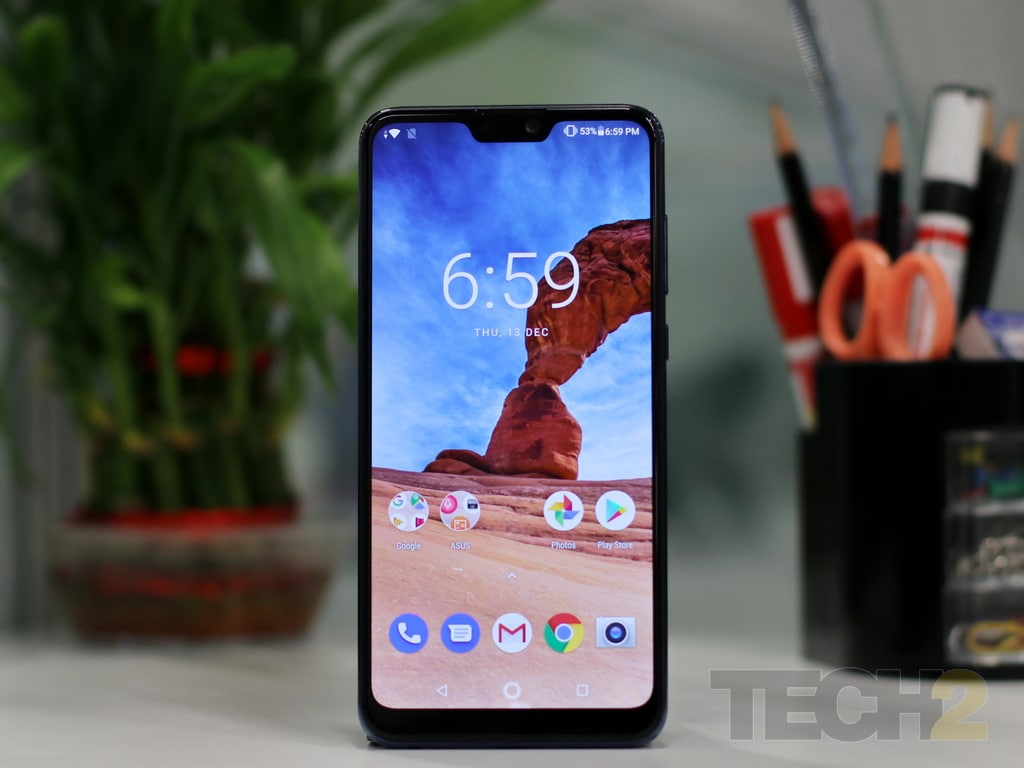
The Zenfone Max Pro M2 is a major upgrade from its predecessor. Image: tech2/ Shomik Sen Bhattacharjee
The aggressive pricing really means that Asus wants in on the mindspace occupied by Xiaomi. The company not only wants the Zenfone Max Pro M2 to be a Redmi Note 6 Pro alternative anymore but one that beats it on every account. While the specifications on paper do suggest trouble for Xiaomi here, does the Max Pro M2 really take the cake at this price? Read on to find out.
Asus Zenfone Max Pro M2 Build and Design: 7.5/10
At first glance, you’ll immediately notice that the Zenfone Max Pro M2 looks nothing like its predecessor. Gone is the dull boring black chunk of plastic with big bezels. This is a phone that is actually quite pleasing to look at. The phone is still completely made of plastic but the brushed metal design certainly looks great. Until you actually start using it.
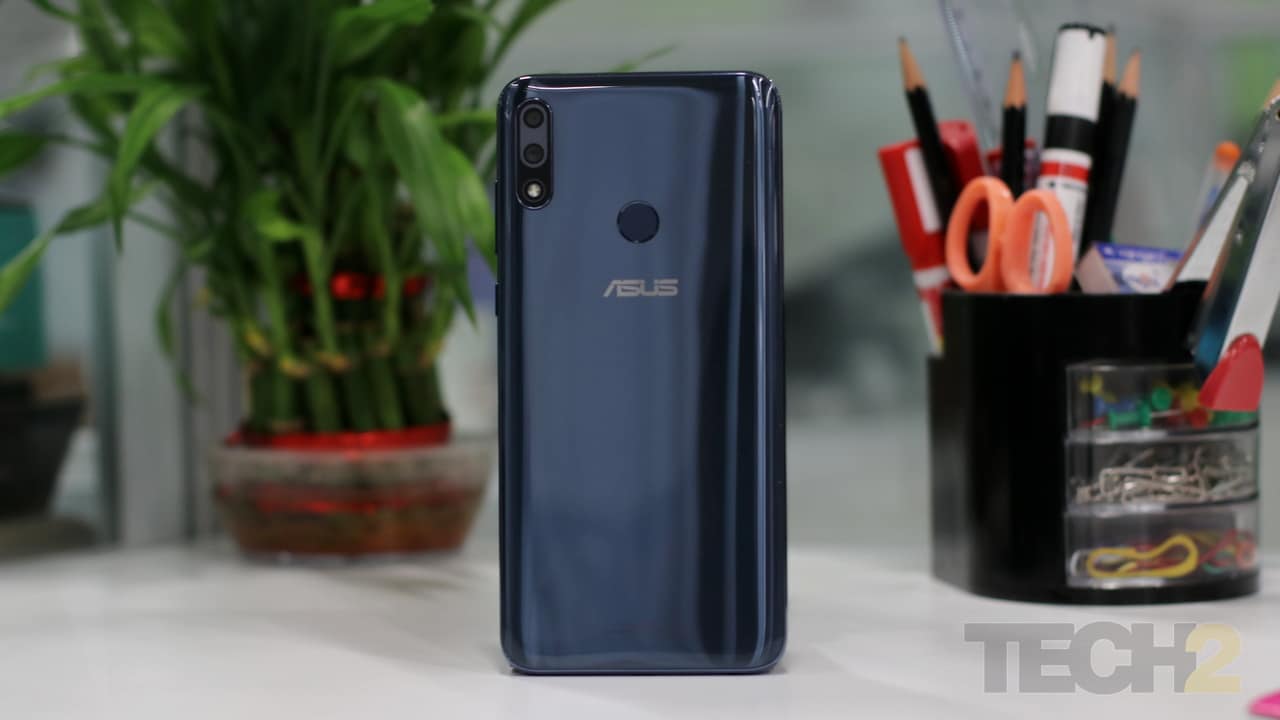
The back of the Zenfone Max Pro M2 picks up scratches quite easily. Image: tech2/ Shomik Sen Bhattacharjee
Within a couple of days of using the phone, I managed to have a considerable number of scratches on the back, despite being careful about where I placed the phone. Asus does throw in a clear plastic case in the box, but it could have certainly done better here.
That said, everything else about the design is quite appealing. The notch isn’t too big, the buttons are nice and tactile and the phone is also quite grippy, given the size of the phone. The plastic build here also helps keep the weight down to just 175 grams, despite the massive battery inside.
Despite the back being so prone to scratches and smudges, what is intriguing is the fact that the Max Pro M2 is one of the only phones in its budget to pack Corning Gorilla Glass 6 protection, something one would come across in more premium offerings.
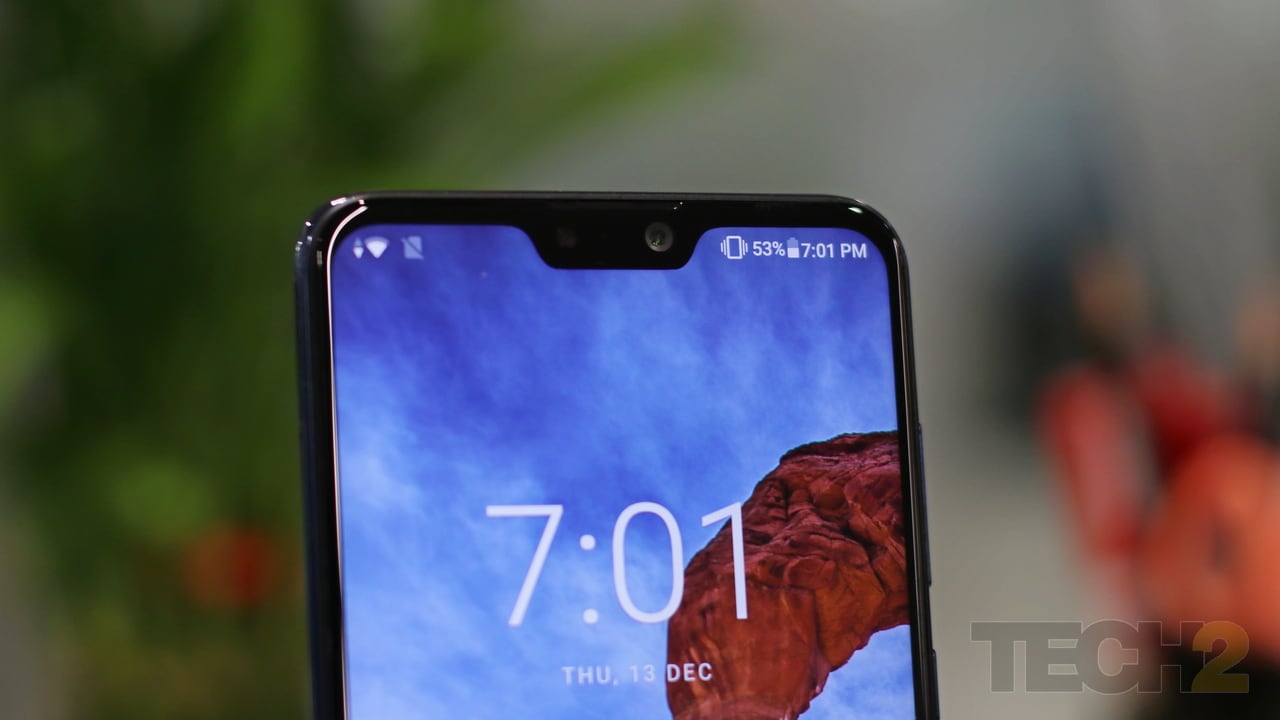
The notch features a selfie camera, a front-facing flash and the proximity sensor inside it. Image: tech2/ Shomik Sen Bhattacharjee
I could be nitpicking but I find it worth mentioning that the vibration motor in the phone is quite bad. I don’t usually have a habit of turning it off but the delayed response from the motor did force me to turn the feedback off within a day of use. Overall, I was pleased with Asus taking a few design cues from the Zenfone 5Z and using it here.
If you do have a habit of dropping your phone though, I would suggest you pick up the dull but sturdy Redmi Note 6 Pro.
Asus Zenfone Max Pro M2 Camera: 7.5/10
If there had to be one area where Asus really needed to improve on the Max Pro M1, that had to be the camera and it certainly has done so with the Zenfone Max Pro M2. However, the Redmi Note 6 would still be my pick in this budget. Here's why.
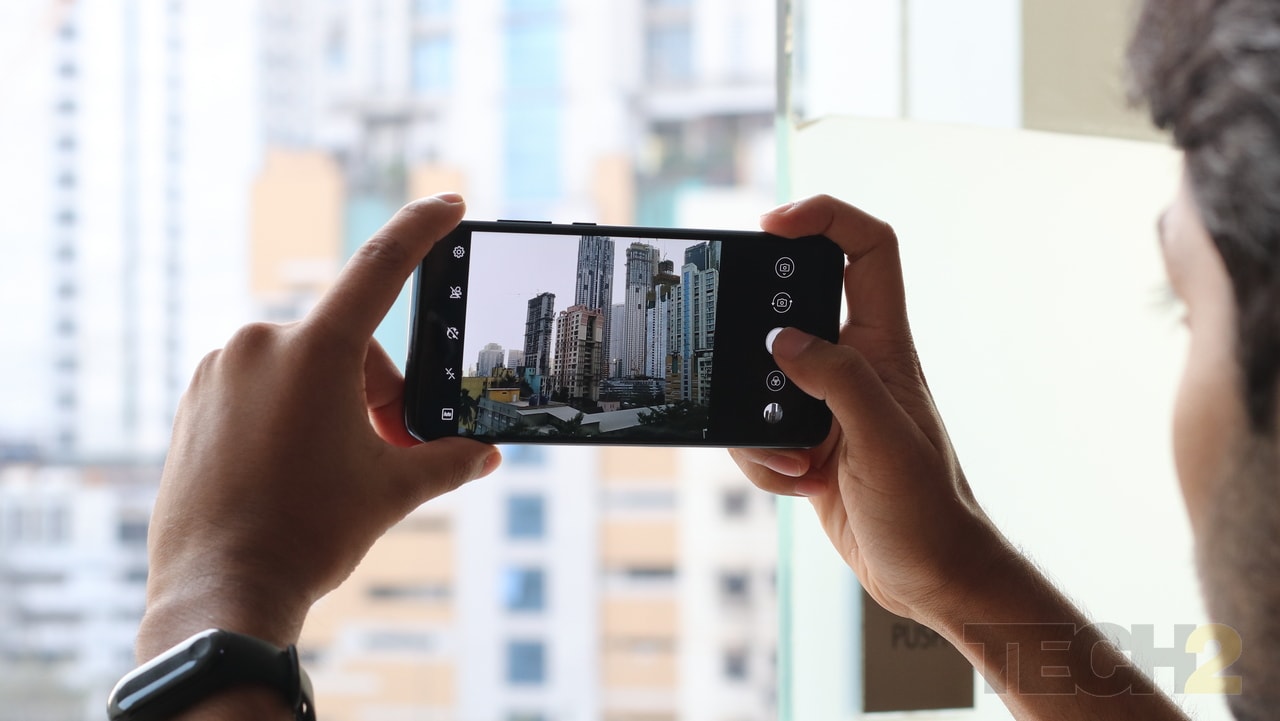
The camera hardware has been improved, making the phone a competent shooter in most lighting conditions. Image: tech2/ Shomik Sen Bhattacharjee
The Max Pro M2 features a 12 MP, f/1.8 primary camera this time, along with a 5 MP, f/2.4 depth sensor. On paper, this is an improvement in terms of hardware when compared to the 13 MP f/2.2 + 5 MP f/2.4 combination on the Max Pro M1.
One thing I really didn't like was the omission of an exposure handle, which I haven't come across any other smartphone lately. If the Max Pro M1 had too much going on in the camera UI, this one's a tad too simplified.
In most cases, especially in bright outdoors and well-lit indoors, the phone manages to take some great shots with detail and colour reproduction being spot on. The portrait mode does an excellent job at edge detection and skin tones are slightly warmer than they actually are but that'll boil down to personal preference.
The dynamic range while shooting portrait shots do take a hit though, which is one area where the Redmi Note 6 Pro does way better.

Portrait mode (auto) Comparison. Asus Zenfone Max Pro M2 (L), Redmi Note 6 Pro (R)
The camera handles tricky lighting situations fairly well. In low-light, the images are detailed for the most part with noise levels kept in check. Details do take a hit here and the focus is softer along the edges of the photo.
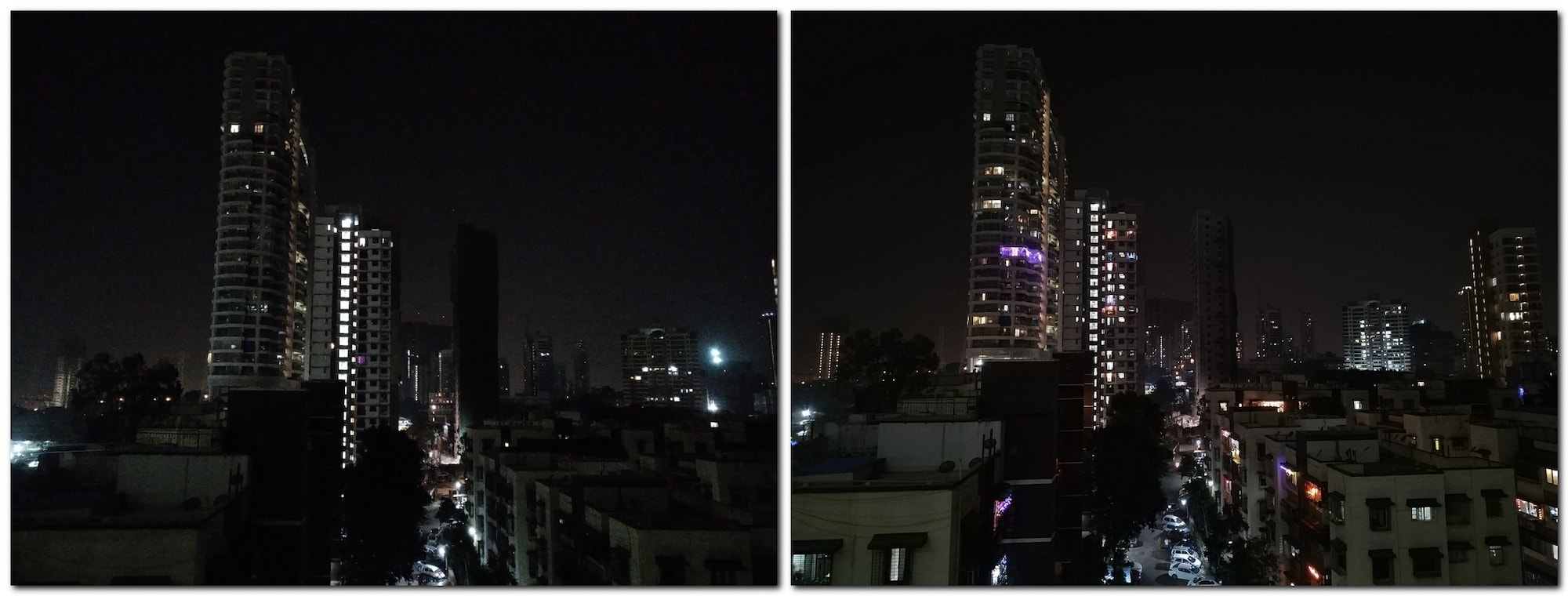
Night portrait comparison - Asus Zenfone Max Pro M2 (L) Redmi Note 6 Pro (R).
I tried shooting images in low light using the Pro mode as well and the results turned out much better.
Selfies turned out fine with the single 13 MP, f/2.0 setup, under most lighting conditions. However, there is no portrait mode here which again, in my opinion, is an odd omission.
As far as videos go, the phone is capable of shooting at a maximum resolution of 4K 30 fps, but even at 1080p 60 fps, there is no stabilisation. Again, an area where the Redmi Note 6 Pro definitely gets the nod.
Most of the niggles I have overall can be fixed with a software update, so I really hope Asus pushes out one soon. Until that happens, the camera crown, at this price, still belongs to the Redmi Note 6 Pro.
Asus Zenfone Max Pro M2 Display: 8/10
The display on the Max Pro M1 was good and that remains unchanged on the M2. You do get a bigger 6.3-inch display this time with a resolution of 1080 x 2280 pixels and an aspect ratio of the 19:9. Colours are punchy but saturation levels are in check, while text and icon looking nice and sharp.
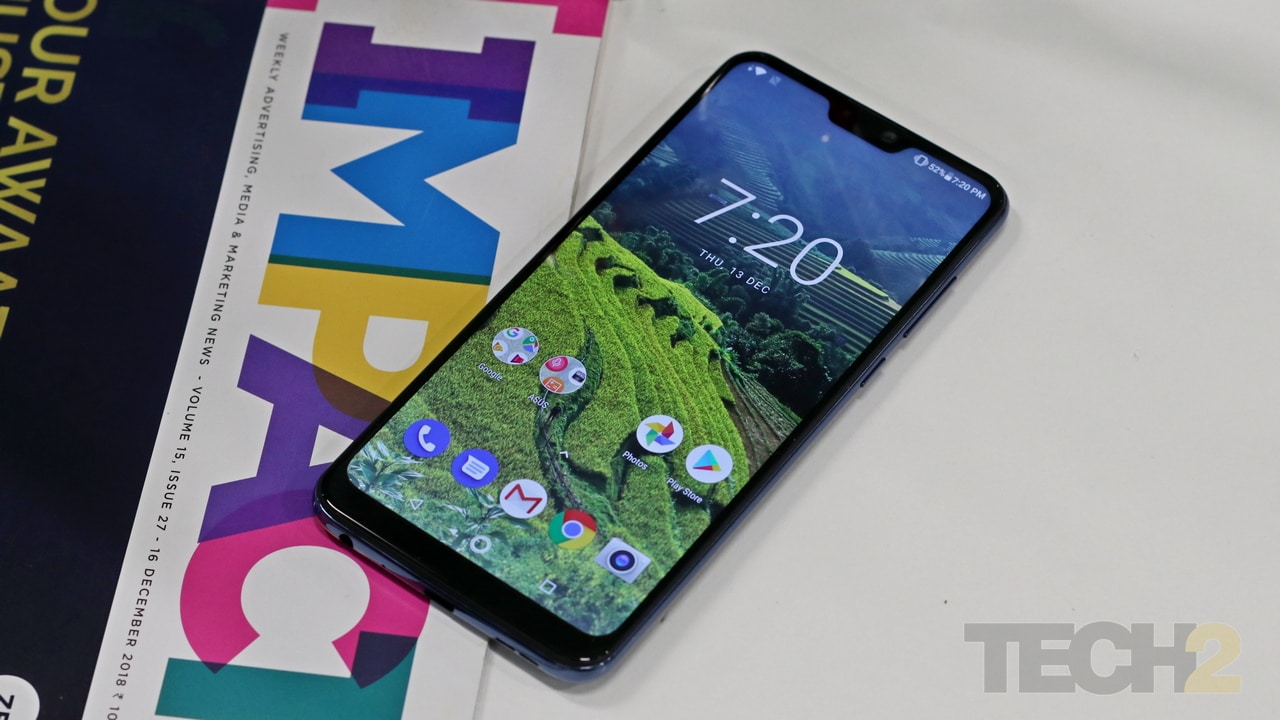
If you do watch a lot of video content on your phone then the Zenfone Max Pro M2 will definitely not disappoint you. Image: tech2/ Shomik Sen Bhattacharjee
Brightness levels are also right and you should have no issue with using the phone in bright outdoors. There’s also a display setting which lets you tone the hue to suit your liking but as far as display modes are concerned, there aren’t any to choose from.
If you do watch a lot of video content on your phone then the Zenfone Max Pro M2 will definitely not disappoint you. There’s also Widevine L1 here, which means you can enjoy content on streaming apps like Netflix and Amazon Prime Video in Full HD, something you cannot do on the Redmi Note 6 Pro.
I did have a slight issue with the touch responsiveness though where touches went unregistered once in a while, but that didn’t happen often enough to have me worried. All said and done, the display here is certainly as good as it gets in this price range.
Asus Zenfone Max Pro M2 Software: 8.5/10
Asus does run a skinned version of ZenUI on its more potent flagships but just as we’d seen with the Max Pro M1, the Taiwanese company has stuck to a near-stock build of ZenUI here and boy does this phone feel fast.
Animations are fast, the transitions are fluid and switching between day to day apps and even games are as fluid as they come.
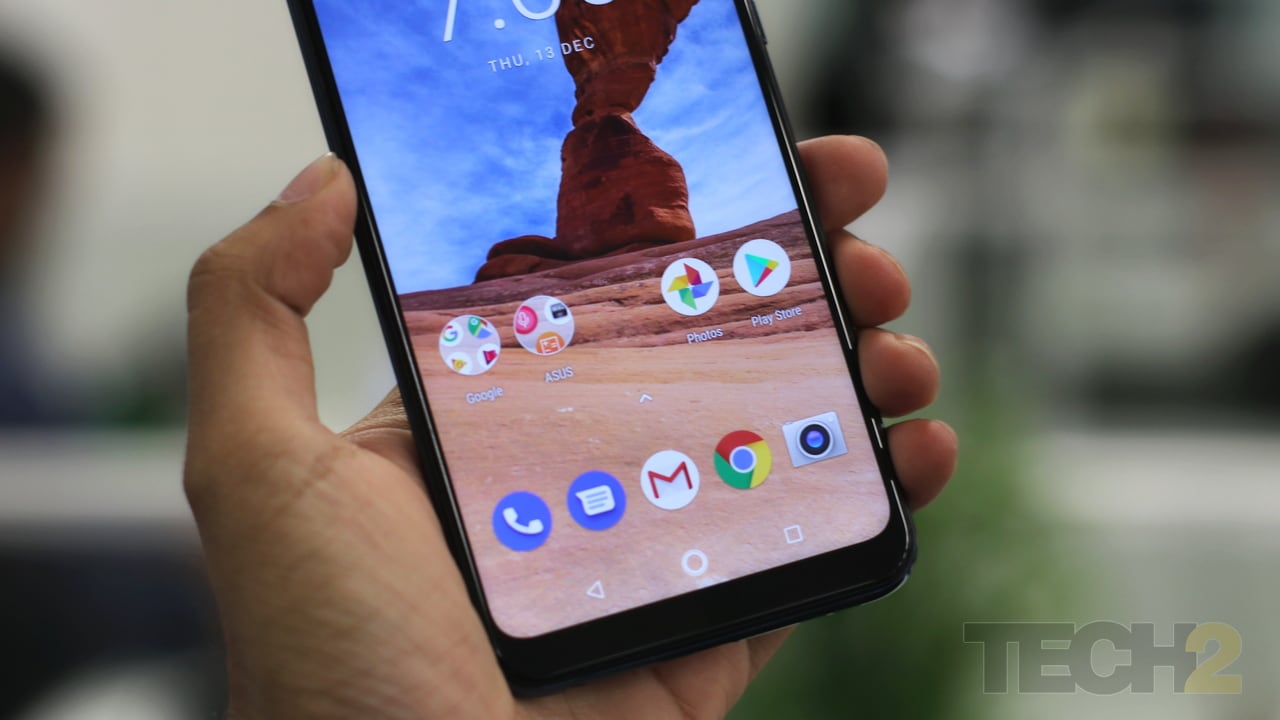
Asus has stuck to a stock build of Android again which makes the UI feel super fluid. Image: tech2/ Shomik Sen Bhattacharjee
There’s is also very little pre-installed bloatware with the only apps that came pre-installed being Facebook and Instagram, both of which can be uninstalled if you don't need them. I also had no problems with long-press shortcuts and multi-window usage.
Zen UI here still comes built on top of Android Oreo 8.1, but Asus has made a promise at launch that the phone will get Android 9 Pie in January 2019. The phone also comes pre-installed with the October Android security patch which is nice to see.
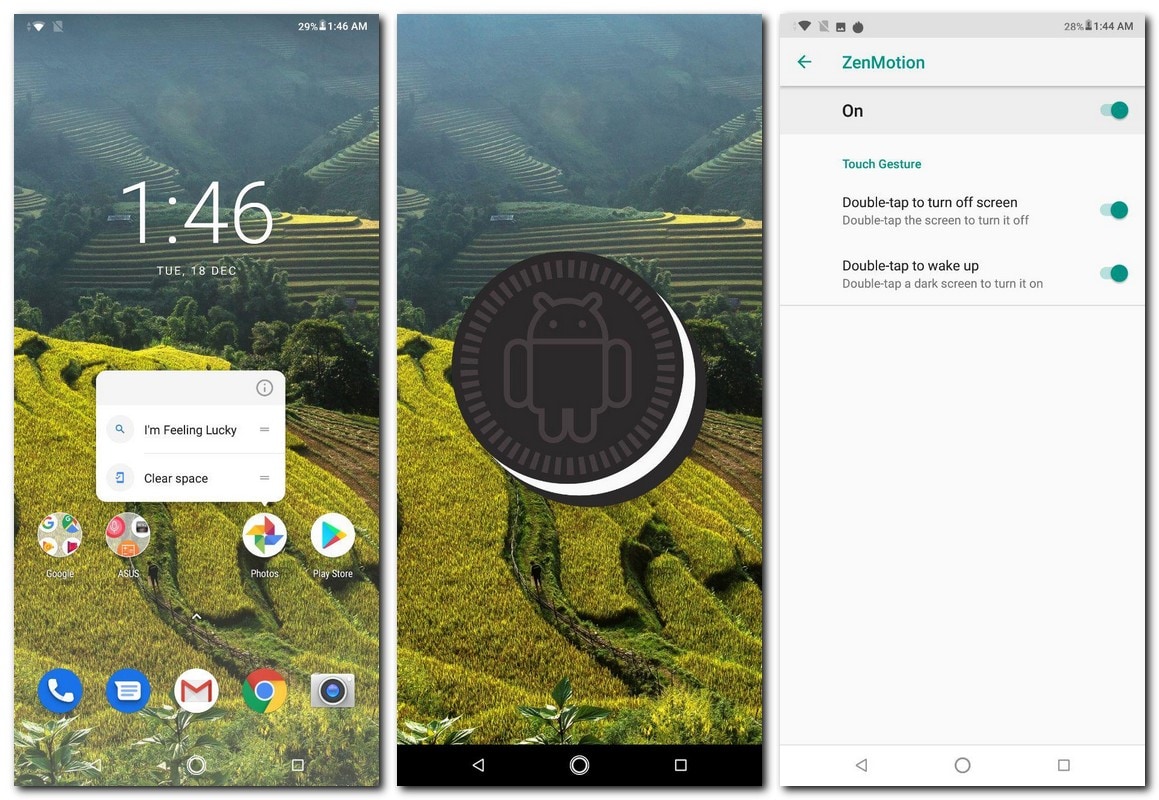
One does miss gesture support which I personally don't prefer, but having that option would definitely help maximise screen usage. Asus does throw in double-tap to lock and wake the phone, but that's about all you get as far as gestures go.
Asus Zenfone Max Pro M2 Features: 8/10
As mentioned earlier, the Zenfone Max Pro M2 features a 6.3-inch Full HD Plus display boasting a notch and a screen to body ratio of 90 percent. The screen here is protected by Corning's Gorilla Glass 6.

I would have loved the move to USB-C this year but considering most budget phones still have micro USB, that's certainly not a deal breaker. Image: tech2/ Shomik Sen Bhattacharjee
Inside, we have a Qualcomm Snapdragon 660 chipset which comes paired with an Adreno 512 GPU.
Coming to the storage and RAM options, the base variant comes with 3 GB of RAM coupled with 32 GB of internal storage, and a second with 4 GB of RAM coupled with 64 GB of internal storage, and a third with 6 GB of RAM with 64 GB of internal storage. We got the 4 GB RAM model for testing.
The phone also comes with a microSD card slot which can be used to expand the storage of the device to up to 512 GB. People buying the device get 100 GB free Google Drive storage for 1 year which is an additional bonus.
For optics, the Max Pro M2 uses a 12 MP Sony IMX486 primary sensor with an aperture of f/1.8 and an equivalent focal length of 27 mm; along with a 5 MP f/2.4 depth sensor. The front camera, on the other hand, is a 13 MP sensor with an aperture of f/2.0.
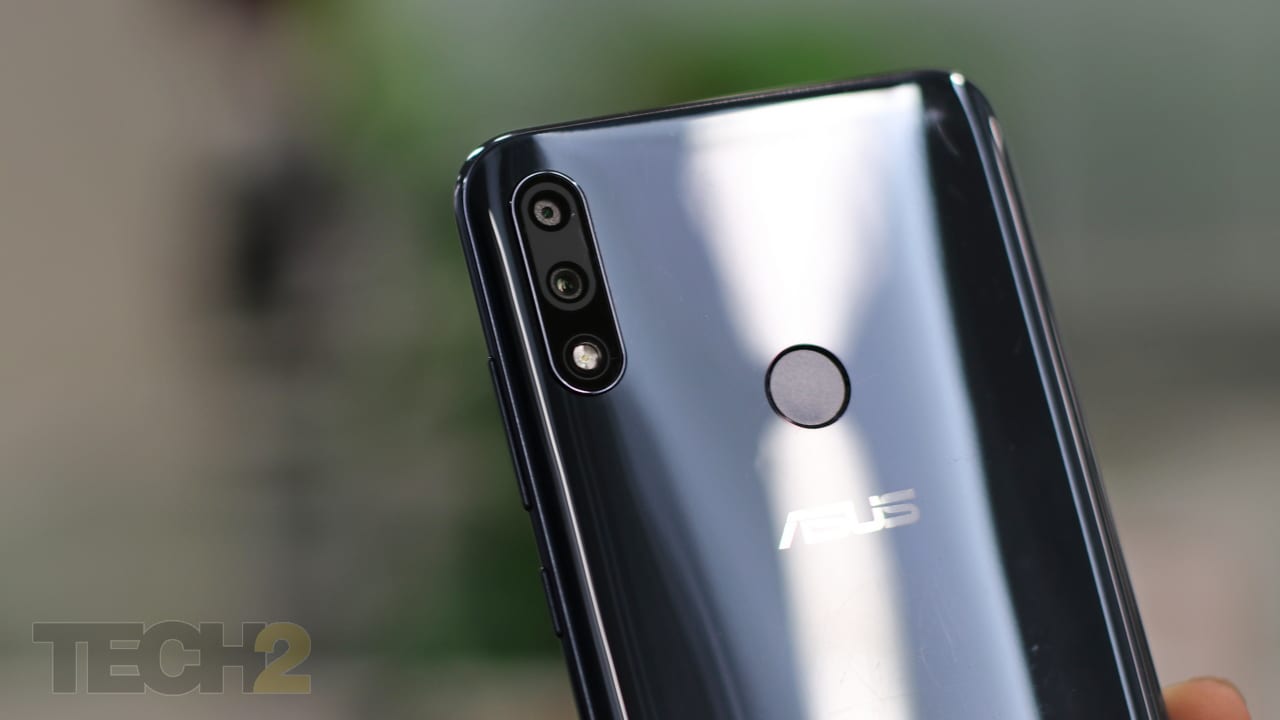
the Max Pro M2 uses a 12 MP Sony IMX486 primary sensor with an aperture of f/1.8. IMage: tech2/ Shomik Sen Bhattacharjee
The Zenfone Max Pro M2 runs Asus' Zen UI built on top of Android 8.1 Oreo and is powered by a large 5,000 mAh battery. The company has confirmed that the device will receive Android 9 Pie in January 2019.
Connectivity options include Wi-Fi 802.11 b/g/n, Wi-Fi direct, Bluetooth 5.0, GPS, GLO, BDS, GAL, and QZSS; there are three slots, two for SIM-cards and one for a microSD memory card. The range of sensors on the device includes the accelerometer, electronic compass, gyroscope, proximity sensor, light sensor.
There is a micro USB slot, a 3.5 mm headphone jack and a fingerprint sensor at the back. There's also a software-enabled face-unlock feature.
Asus Zenfone Max Pro M2 Performance: 8/10
While we saw a majority of budget offerings under Rs 15,000 pack the Snapdragon 636 chip in 2018, the move to a more capable Snapdragon 660 appears inevitable as time passes. Sure the Snapdragon 636 chip holds up just fine until you put it through heavy gaming, but a jump to a Snapdragon 660 definitely helps with the performance overall.
Pair the Snapdragon 660 SoC with a stock-like software experience and that's exactly what you get from the Zenfone Max Pro M2. While regular tasks like web browsing, sifting through Instagram and Twitter and bingeing on YouTube and Netflix was quite smooth, the phone even handled most popular games just fine.

Battlelands Royale on the Asus Zenfone Max Pro M2.
Talking about gaming, you won’t be able to run titles like Asphalt 9 and PUBG Mobile on maxed out settings here, but tuning things down to medium certainly ensures decent frame rates. I would have really enjoyed the inclusion of a gaming mode like we saw on the Realme 2 Pro, but there isn't any of that here. I tried my hand at a number of other titles like Alto's Odyssey, Battlelands Royale and even a bit of Mini Militia, all of which ran without a hiccup. RAM management was also up to scratch considering the unit we had for review came with only 4 GB of RAM.
The fingerprint scanner on the back of the phone is fast but the same isn’t true for the software-based face unlocking feature.
Coming to audio output through the mono speaker setup, it does get very very loud. There's not a lot of separation or depth in the sound but you will be pleased with the overall output. The output from the 3.5 mm headphone jack was also fine.
The phone supports dual 4G standby and I had no issues regarding call quality through the earpiece placed above the notch on the phone.
https://dailymotion.com/video/x6z4pvt
Asus Zenfone Max Pro M2 Battery life: 8.5/10
The Asus Zenfone Max Pro M2 packs a massive 5,000 mAh battery and it's an absolute workhorse. Using it as my daily driver, I receive a couple of hundred messages on Telegram, WhatsApp as well as two mail accounts synced at all times. I also spend at least an hour gaming, an hour of YouTube and music streaming and roughly half an hour on phone calls every day. With this kind of use, I was able to go through almost two and a half days before I was able to wear the battery down to below 10 percent.
We weren't able to run our standard PCMark Battery test on the phone, but I can tell you with some amount of conviction that the phone has the best battery life in the segment.
I really would have wished for a fast charging adapter to juice the massive battery up, but with such stellar battery life, I certainly can't find a reason to complain much.
Asus Zenfone Max Pro M2 Verdict and Price in India
For a phone that starts at Rs 12,999, the Asus Zenfone Max Pro M2 is by far the most well-rounded smartphone you can get your hands on. Barring camera performance, where the Redmi Note 6 Pro beats it, the phone outclasses and outlasts every other phone under Rs 15,000, making it a great all-rounder with best in class battery life.
If you do happen to take a lot of pictures and videos, then the Note 6 Pro would definitely be a better pick. While, if you are looking out for a gaming phone, I'd still suggest you stretch out your budget a little bit more and consider the POCO F1 at Rs 19,990. But for everything else, the Zenfone Max Pro M2 strikes a great balance of power, style and a fluid software experience, all with a 2-day battery life.
Options like the Honor 8X and the Realme 2 Pro can be considered too, but battery life, optics and the software experience on the Zenfone Max Pro M2 are far superior to these offerings.
Tech2 is now on WhatsApp. For all the buzz on the latest tech and science, sign up for our WhatsApp services. Just go to Tech2.com/Whatsapp and hit the Subscribe button.
Source
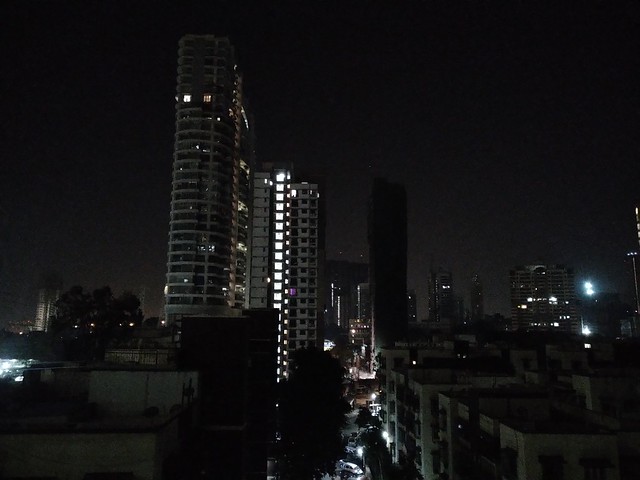
No comments: